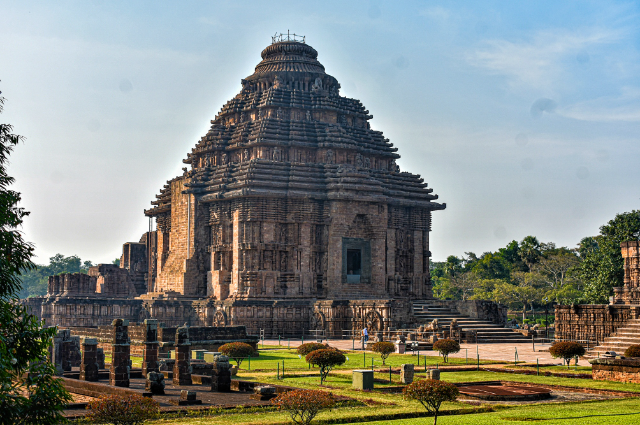
Some ruins don’t look dead; they look like they are waiting.
I vaguely remember the Konark Temple I visited as a child, maybe 7 or 8 years old. Those carved scriptures, those long stairs—I always wondered why there were no rituals like other temples. Why did no bells ring? Why did no priests chant? It felt as if the temple held mysteries, a hidden truth—as if the stone wasn’t just carved into the chariot of the Sun God, but also into questions that had no answers. Questions that did not demand solutions but chose to hum in your chest, quietly.
Back then, I couldn’t understand that feeling. Now I know: it wasn’t emptiness—it was memory. A memory that didn’t belong to me, but still settled in my bones. The Konark Sun Temple doesn’t feel abandoned; it feels paused. Looking at its fallen walls and broken sculptures, it doesn’t seem destroyed. It feels as if it chose to collapse.
The Stone That Made a God Float
One legend speaks of a giant lodestone once placed atop Konark. Its magnetism was so strong it held the idol of Surya, the Sun God, floating in midair without any support. At first, I thought it was only folklore. But Portuguese sailors once complained that their compasses went wild while passing the Konark coast. Eventually, they removed the lodestone, and with it, the temple lost balance. The idol fell, and slowly, so did the structure. Perhaps the magic fell with it too.
The Stone Wheels That Tell Time
Lining the temple walls are 24 massive stone wheels, each with eight major and minor spokes. They are not just ornaments; they are sundials. By reading the shadows cast by the sun, one could tell the time down to minutes. Centuries ago, artisans had already merged science, art, and devotion. These wheels still whisper, if you know how to listen.
The Legend of Dharmapada
The story that haunted me most was of Dharmapada, a twelve-year-old boy. The temple’s crown stone wouldn’t stay in place. The king had threatened to kill the architects if the temple was not completed by dawn. Dharmapada climbed at night, placed the stone correctly, and saved the workers. Then, before sunrise, he leapt to his death—to protect the secret, to protect the elders, and to protect the temple’s honor. His name never entered royal records, but it is engraved forever in the soul of Konark.
Why the Temple Was Never Worshipped
Unlike most temples, Konark never became a site of daily ritual. Some say it was because of its collapse, others because of its closeness to the sea. Some whisper curses, others claim it was built to display power, not devotion. Whatever the reason, the sanctum was sealed, and the idols lost. Konark became a temple where God never came—sacred not in ritual, but in silence.
Echoes and Legends
- The Anklets of Devadasis: Some say if you linger, you can still hear faint gungroos—the anklets of temple dancers who never left.
- The Iron That Never Rusts: Near the sanctum lies an ancient iron rod that defies corrosion, even after centuries of sea air.
- The Shadowless God: Legends say the idol of the Sun God once stood without casting a shadow, glowing only in light.
Some Questions Are Meant to Stay Unanswered
Maybe Konark was never meant for worship. Maybe it was built for awe?
The temple breathes stories into silence. Mysteries that refuse to fade?
Konark is still waiting...
